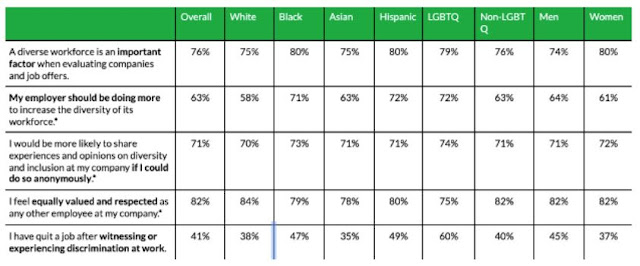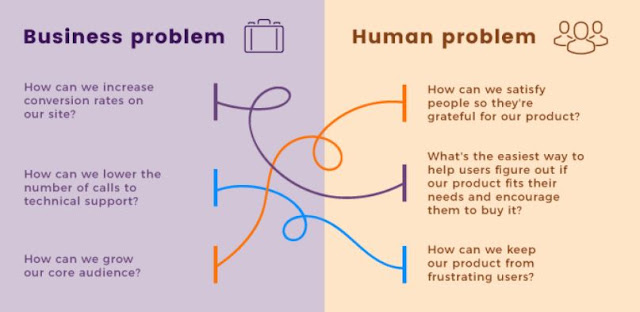
People or product - this is a non-trivial choice often faced by management organizing production processes in any company. For a long time, it was the product-oriented approach to software creation that ensured maximum efficiency of activities and increased the quality of the final solution. However, focusing only on the characteristics of the produced system to the detriment of the real interests and cohesion of the team leads to the deterioration of the final result and does not allow to optimally organize the production process. This article provides information on the benefits of the human-centered approach in the development of IT solutions.
IT Market: Challenges For Management
The IT sphere, associated with the development of software and digital solutions for business, remains demanding on the quality and morale of specialists. Employees, feeling the high demand on the labor market, express their own requirements in relation to the employer, which are not always reduced to the amount of salary.
According to the Global Knowledge survey, many employees in the IT sector are ready to change jobs if they see no career prospects for themselves. About 62% of surveyed specialists are ready to leave the company if the employer is not ready to invest in their development. In general, more than 90% of disgruntled specialists said they are ready to look for a new job in the next year. Against this background, about 78% of surveyed managers say there is a critical lack of competence in finding new qualified employees. Meanwhile, according to the Glassdoor survey, such parameters as sharing the company's mission (79%) and corporate culture (93%) are more important to most employees. About 73% of employees surveyed do not want to work for a company whose values do not suit them.

From the analysis of the data obtained, we can conclude that for successful implementation in an IT company, of great importance is not only the correct organization of production processes, but also the ability to interest specialists and retain them in the team. When employees lose interest in the activity, it has a negative impact on the percentage of successfully completed SaaS projects, as well as on the timing and quality of implementation.
Key Principles Of The Human-Centered Approach
This problem can be solved by introducing a human-centered approach to business processes. It relies on flexibility, maintaining a balance between creative freedom and risk management, product development within the ideology of meaningful design, as well as the development of professional qualities and talents of specialists within the framework of effective teamwork.

The human-centered approach contrasts with the product-centered approach by drawing attention to the significant shortcomings in management performance that often accompany it. These include a lack of concern for hiring the right number of specialists, their training and certification, exaggerated expectations of team performance, acceptance of unrealistic customer requirements, etc.
Caring more about the end product than about the morale of executives, company managers face a number of problems: significant delays in project implementation, disparate tasks and lack of effective communication between team members, lack of understanding of current interests and problems of employees, which leads to increased staff turnover, etc.
So, which principles of the human-centered approach in software development should be implemented first?
Strengthening SaaS developer team morale includes increasing the level of job satisfaction and engagement of each individual specialist. It also involves creating a productive communication environment in the development team.
This principle means an alternative way of organizing management processes. Whereas previously the manager was seen as a key figure in the decision-making process, he/she is now perceived more as a coach.
The manager inspires the team by personal example and helps unlock the potential of employees by point-by-point accompanying specialists in performing tasks, setting professional goals, and motivating them to work productively.
The shift from goal-setting and supervisory management to supporting and developing individual talent is a core element of this strategy.
An equally important task for management in the implementation of this principle remains the monitoring of the psychological state of employees within the Me-We-World. It is important to understand what problems and difficulties prevent a person from performing tasks effectively:
• at the personal level - family, financial difficulties, etc.;
• at the level of interaction in the team - personal conflicts, miscommunication, etc.;
• at the negative environment level - problems in society, in the industry, disturbing the environment and threatening safety and health, which has become a significant factor because of the lockout policy and the transfer of employees to remote work.
Each of these levels requires the organization of appropriate management solutions, such as the involvement of psychologists, lawyers, financial specialists, team building, professional development, and relocation. They help increase employee satisfaction, create an optimal work environment, and avoid the negative impact of problems on processes.

Key slogan: “Strong morale ensures speed and quality of product creation.”
When executing projects, it is necessary to find a balance between the creative freedom of managers and the strategy of risk management and control.
On the one hand, staking on the attraction of highly qualified specialists and the development of their qualities, the employer is interested in the full development of each employee's potential. This is facilitated by an atmosphere of creative search, finding non-trivial solutions and lack of constant control.
On the other hand, the lack of full control over what happens in the team during the product development stage can lead to a breach of obligations and the failure of all technological processes. The solution to this equation can be a policy of trust and a culture of flexibility in decision making.

In this way, developers with more experience creating quality code can automatically get the green light to do their part of the job, focusing on the most problematic performers.
A clearly defined goal may imply various strategies for its implementation, given at the mercy of the development team, followed by an assessment of the tools effectiveness and methods used at the level of the team itself or the external audit.
Gamification of some stages of work with the strengthening of the competitive moment and bonuses for finding non-trivial solutions to problems can also contribute not only to greater satisfaction of the development team members with their work, but also help to find more effective solutions to project problems that can be applied in the future.
According to Andersen, Another important principle of PCA is to change the focus of work from developing self-sufficient solutions to meaningful design. This can be understood in two senses.

On the one hand, this means that companies must create products that “think” like people and are designed to optimize the efficiency and productivity of human activities. If solutions are created with people in mind, they will inevitably allow users to spend more time on meaningful and purposeful work. This, in turn, will help unlock the end user's full potential.
On the other hand, this approach should help unlock the potential of the developers themselves, fill them with a sense of meaningfulness and efficiency in their work, so that the final product incorporates these qualities and helps users better assimilate solutions and interact with each other. In essence, it is a requirement to make the development of software solutions oriented toward human ways of thinking and solving problems.

The extent to which using PCA helps solve traditional project management problems and take efficiency to a higher level has been demonstrated by 15 years of research. These include reduced development time and significantly improved release quality, better management of people and resources, optimized risk management, and more. At the same time, to evaluate the effectiveness of the noted approach, you need to pay attention to such metrics as:
• team morale: the higher it is, the faster and higher quality the final product;
• production cycle: the better the approach is implemented, the less time is spent not only on developing solutions, but also on setting tasks, prioritizing, selecting designs, etc.
• quality of development: the fewer errors and the higher the speed of their correction, the better the production environment
• business value: any effort spent should result in a business effect, so the higher this indicator is, the more tangible the pragmatics of the activity for the development team and the higher the payoff.
Conclusion
The human-centered approach to software solutions development is a meaningful response to the challenges facing management. It helps effectively organize project work and preserve the quality of professionals working in the team. In contrast to the product-oriented approach, parameters such as team morale, the balance between creative freedom of the performer and risk control, as well as the ideology of meaningful design come to the fore.
With the promise of increased productivity, the human-centered approach requires rethinking the key performance metrics of development teams. Implementing this approach is also on our company's strategic planning horizon.

